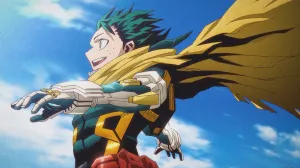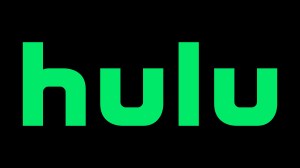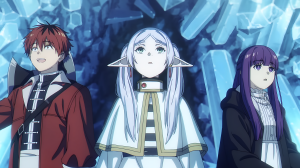It’s pretty easy to take for granted how simple most character and IP rights are from the outside perspective. Take for example DC Comics, Warner Bros. Discovery owns all of those characters and uses them in comics, movies, shows, and countless other places. Universal Pictures has owned the rights to Jurassic Park for over 30 years now, and Disney totally owns Star Wars & Indiana Jones outright thanks to acquiring Lucasfilm. Even Marvel, whose characters were previously scattered across multiple Hollywood studios, is now mostly back under the control of Marvel Studios (Spider-Man of course is stuck at Sony, and likely will be forever). Things have not always been so cut and dry though, and if you go back far enough, things get very tricky, and perhaps none are trickier than cinema’s biggest titan, King Kong.
Videos by ComicBook.com
To fully appreciate the complexities of the complicated rights situation to Kong, we have to go all the way back to before his creation when he was just a pie in the sky idea by one Merian C. Cooper. Cooper would conceive of the idea for the movie King Kong in the late 1920s and early 1930s before eventually landing at the doorstep of one RKO Pictures, who agreed to produce the film after getting a glimpse of the creature models created by Willis O’Brien. In his book, Living Dangerously: The Adventures of Merian C. Cooper, Creator of King Kong, author Mark Cotta Vaz reveals that Cooper declined to take a salary for co-directing and co-producing the film, instead making a deal to retain the rights to King Kong as a property afterward. In addition to the feature film they were producing, Cooper would commission a novelization of the screenplay, to be released before the film to build up anticipation.
It’s both not a spoiler for this story and also not a surprise to say that RKO didn’t go along with the deal Cooper made in the end. It also won’t be the last time a studio does something shady with King Kong rights.
Cooper bounced around after the release of King Kong, taking jobs at RKO and various other rival studios in town, later re-enlisting in the Air Force as World War II began. While still working in Hollywood afterward, Cooper would conceive of and help shepherd countless projects to the screen, including his other famous ape property “Mighty Joe Young” in 1949; but it’s worth noting that at this time King Kong was still being re-released into theaters every few years and continued to make money. That, combined with the failure of the quick cash grab sequel Son of Kong (released in the same year as the flagship picture), were seemingly the things that kept Cooper from further exploiting his creation in the years after its initial release, despite attempts to revive it with projects like King Kong vs Tarzan (which would later become a book) and others.

In this time, and in the decades that would follow, RKO Pictures would begin to license out the use of King Kong, most famously to Toho in Japan for their 1962 feature King Kong vs. Godzilla, but also to various entities that would produce Kong toys, games, and other ephemera. Cooper got wind of this and tried to put a stop to it ahead of the release of Toho’s movie (released in the United States by Universal), but his legal attempts failed to move along toward a proper judgement as evidence that would have clearly made Cooper’s case was lost to the ages, with Cooper himself believing the documents stolen. Some letters still existed that clearly defined Cooper’s rights, but no court would decide the fate of Kong’s ownership until after his death.
To that end, the 1976 King Kong remake should be credited with being the main ball that gets the entire thing rolling with regard to who owns what about the iconic movie monster. Produced by Dino De Laurentiis, this remake of the classic character spawned multiple lawsuits as Universal Pictures claimed to have had a “verbal agreement” with RKO to remake Kong while De Laurentiis himself had paid the company and secured a license to make his version of the movie. A fracas began at this point as all of the companies involved tried to flex their legal muscles about their purported ownership of Kong. Central to the entire debate however is that just a few years prior to the 1976 film’s release, the copyright for the novelization of the 1933 film had expired and as a result had fallen into the public domain. This would not only complicate matters for all of the parties mentioned above, but end up costing RKO a lot of money.
On December 6, 1976 (eleven days before the theatrical release of the De Laurentiis King Kong), Judge Manuel Real of the United States District Court for the Central District of California ruled in favor of what Merian C. Cooper had argued for decades, resulting in what has become the “Cooper Judgment.” As such he declared that the deal previously made between Cooper and RKO had been satisfied with the release of King Kong and Son of Kong in 1933; that the continued licensing of King Kong by RKO in the decades since was done without his consent and that profits resulting from it would need to be paid back to Cooper’s estate; and the story of King Kong as depicted in the novelization of the screenplay was fully in the public domain.
With the rights of Kong’s “Name, story, and character” now returned to Cooper’s heir, Richard Cooper, he promptly sold them to Universal for a sum, seemingly giving them control of the great ape moving forward. In fact, Universal put their own plans for Kong remake on the backburner now holding onto the prize, with De Laurentiis needing to gain their approval for his 1986 sequel King Kong Lives. The realization that elements of King Kong were in the public domain, a discovery that was bolstered by Universal in one of their 1970s lawsuits, would come back to bite the studio, however, but also open up the property to anyone.

As many gamers might know, Universal filed suit against Nintendo in the 1980s, claiming that the popular Donkey Kong arcade games were infringing on their trademark rights to King Kong. In the end the courts decided that not only was this a ridiculous thing for Universal to claim, but that because the rights to Kong were so fractured, and major elements of the franchise were in the public domain, Universal didn’t have a trademark to King Kong. (For the sake of sharing trivia, one of the lawyers that defended Nintendo in this case, John J. Kirby, Jr., would be immortalized in Nintendo lore with the tiny pink character bearing his name just a few years later).
So where does this leave things with regard to the rights of King Kong? Scattered would be putting it mildly, confusing would it be the most accurate summation.
Copyright to the 1933 feature film and its sequel are still owned by RKO Pictures, LLC (a group that purchased the defunct label in the late 1980s) but domestic distribution rights to the films are owned by WarnerMedia (having absorbed previous owner, Turner) and international rights sit with various other companies depending on the territory. WM also has a partial stake in Legendary’s Monster-Verse movies, Kong: Skull Island and Godzilla vs. Kong, having co-produced them.
Studio Canal, having absorbed the De Laurentiis Entertainment Group, owns the 1976 King Kong film and its 1986 sequel. Distribution to the ’76 Kong remains with Paramount Pictures domestically.
The Merian C. Cooper Estate still claims ownership of book and publishing rights for Kong, having teamed up with artist Joe DeVito to produce new stories throughout the 2000s, with some as recent as last year.
As such, a judge ruled back in 1983 that Universal was said to own “only those rights in the King Kong name and character that RKO, Cooper, or DDL do not own.” From the outside perspective we can note that Universal outright owns the 2005 film by Peter Jackson and exploits their control over King Kong in the form of the theme park rides Skull Island: Reign of Kong and King Kong: 360 3-D. A simple check on the trademark database from the United States Patent and Trademark Office reveals various Kong related trademarks held by Universal that have lapsed over time, including the many they created for the 2005 movie.
When asked to clarify their ownership or position on their King Kong rights as a studio, Universal did not return our request for comment.

In essence the rights to King Kong seem to boil down primarily to the fact that the various interpretations of the character are owned by the company that produced them and that the novelization of Kong being in the public domain frees him up to adaptation by anyone as long as they go off of that book. Even Legendary Pictures have been forced to use elements of the Kong novelization in their versions of the character (as seen in their use of the “Wanderer” as the crashed boat in 2017’s Kong: Skull Island). When asked for a statement about how they’ve managed the legal hurdles of navigating the King Kong rights in their new films, Legendary and Warner Bros. Pictures also declined to comment.
A musical adaptation of Kong was previously performed in Australia in 2013 and made it to Broadway in 2018 with the press notes for both noting that it was “based on the 1932 novel” (other notations for the 2013 version also included a line saying “King Kong is authorized by the Merian C. Cooper Estate,” making it even more confusing is that there are no similar sentences found in reference to the 2018 version). Nowhere in sight for either is any mention of Universal or their supposed rights.
“If the title is clear and the underlying story is clear, so you can use the character, you can take the Kong character and put him in other movies, there’s no reason anyone can’t do what they want,” Larry Zerner, a Copyright, Trademark & Entertainment Attorney, told ComicBook.com in an interview on the subject (Zerner is best known to some film fans by his association to the Friday the 13th series and helping the public understand its own sordid copyright fiasco). He added: “If they can make a Broadway musical without Universal’s permission, then you could make a movie without Universal’s permission.”
So what does the King Kong novelization being public domain mean in the larger scope of things? There are some notable differences between the text and the finished feature, including full scenes that were written for the movie but never photographed, but also smaller details like character and location names, pieces of dialogue, and most importantly the ending. As film fans know, the 1933 movie ends with King Kong tumbling from the Empire State Building after battling with planes and falling to his death; in the novel, he jumps while trying to snatch a plane from the sky.

To that end, anyone can seemingly do anything with the original King Kong novel, as long as they do not infringe on the rights of any other versions of the monster and make sure they’re operating solely on the basis of what is found in that book. If it sounds confusing, that’s because it is, but other companies have also realized that this is a framework they can tap into as well. Licensing the specific appearance of any version of Kong from a studio would be costly, but if the King Kong novelization is public domain, can’t anyone do anything with it? Seemingly, yes, but there are apparently still some lingering doubts.
One notable company, when asked to comment for our story on how they’ve managed developing their own license-free King Kong paraphernalia over the past few years, also declined our request, citing the complicated rights situation as a whole for not discussing the matter on record.
To make things even more interesting however is the status of the original feature film. Released in 1933, the movie’s copyright protection is subject to The 1998 Copyright Term Extension Act, giving it 95 full years of protection. As a result, on January 1, 2029, the 1933 film will ALSO enter the public domain. At that point, anything Kong-related as seen in that version would be free for use by anyone in the same way that the novel is now, and yet on paper it still appears that Universal claims some kind of rights to King Kong.
How else can you describe all of this? Frankly, it’s a jungle, and nobody is talking.








